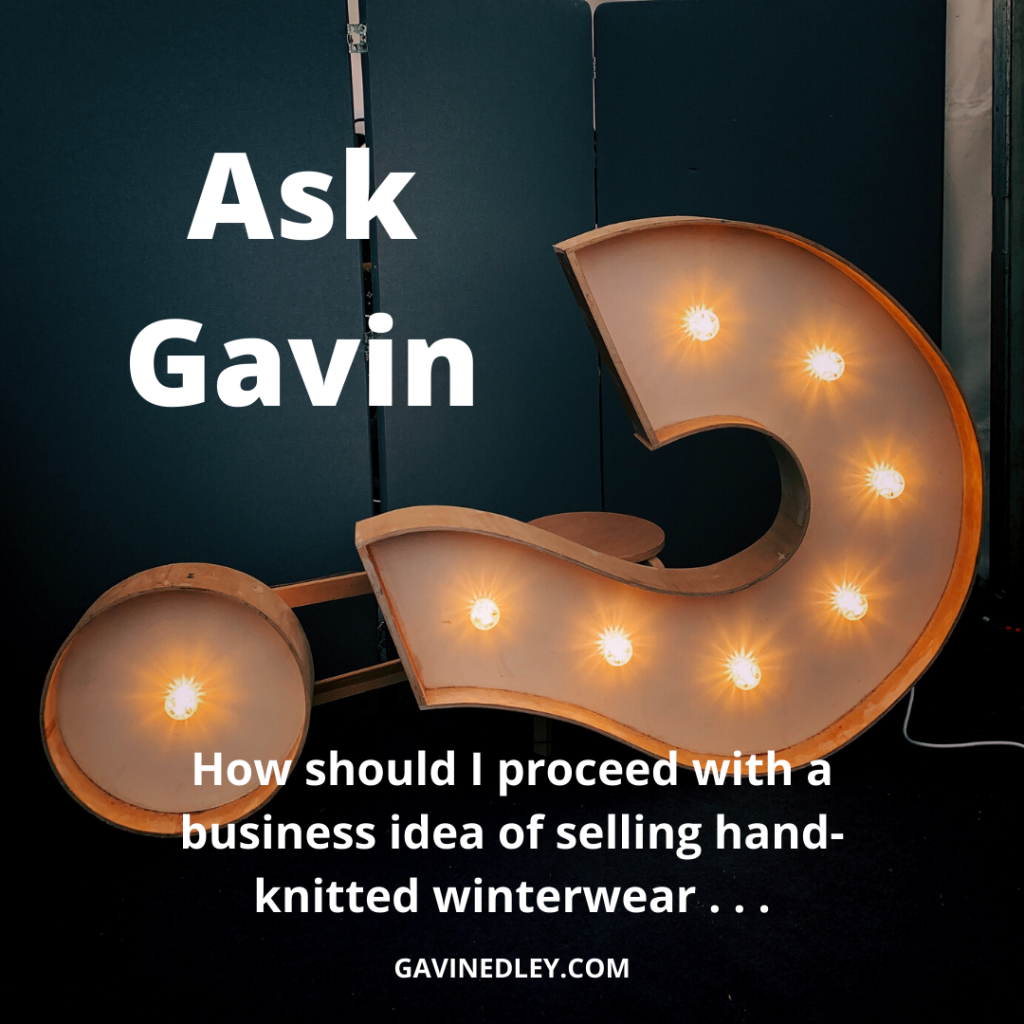
How should you proceed with a business idea of selling hand-knitted winterwear? I want to connect with the rural population of Uttarakhand, provide them with raw material and source of income. I have a lead on logistics and online marketplace.
First of all, thanks for the very thorough question!
Secondly, I love the ethics behind the concept, so bravo for working on something that intends to create positive impact/change.
I will assume, since you say you have a lead on logistics and online marketplace, that you already have plans for the business infrastructure in this regard ie the supply and production process.
So, the next step will be to decide on your route to market (doesn’t necessarily have to be mutually exclusive, you can adopt several routes) – manufacturer supply, wholesaler supply, or direct-to-consumer supply.
Depending on how efficient you can make this infrastructure, and the price-point you need to achieve on the end product (retail price) to cover all costs and make a healthy margin, whilst still remaining competitive – will dictate which routes to market will work for you or not.
You’ll need to be making around 75% gross margin (at competitive retail prices), minimum, if you intend to target the major fashion multiples with your product.
The biggest retailers command at least 50% margin from the net (exc VAT) retail price, so if you’re working on 75% gross at net retail, then this will be the equivalent to selling direct to consumers and making 25%.
If you can do this, then a wholesale model may work best for you – focusing on the manufacture and delivery of products to a select few major retailers.
If you’re making even healthier margins than this, you may be able to consider manufacturer-level supply ie supplying major fashion wholesalers. These will command around 25–50% depending on their size, and then you need to factor in the retailer margin on top of this (retailers who buy from a wholesaler will typically work on anything between 25–50%), so you’ll need to be working on around 85%+ gross margin to look at this route to market.
And anything less than a 75% gross margin may dictate that you need to focus on direct-to-consumer sales, at least initially, in order to keep the operation viable.
The former approaches to market involve following the typical ‘buying process’ of the retailers and wholesalers that you intend to supply – there will be forms to fill out and meetings to attend. You’ll need to prepare pitches and be prepared to travel to and attend lots of meetings.
The latter approach, direct to consumer, will probably involve more work initially, in order to build your route to market.
You’ll need to establish a website, connect-up any third party platforms that you intend to sell on (Amazon, Ebay, Etsy and so on), get packshots made of your finished products, list all of your range, build promotional activity (social accounts and consistent activity, PPC campaigns, affiliate programs, SEO, PR, and much more), and so on.
Either way, you need to ensure your model and infrastructure is robust enough, and scaleable, from the outset so you don’t have to revisit this and rebuild it, when you’re trying to focus on the marketing of your business.
So spend lots of time testing – stress-test the financials (what could go wrong, and how badly would it have to go wrong – from projections – to start making a loss?), test the capacity and speed of your operations, and build contingency plans for each potential outcome.
Only when you have a solid model in-place, and contingency plans for what could go wrong, should you begin to move forward and choose your route(s) to market.
I hope this answers your question ‘How should I proceed with a business idea of selling hand-knitted winterwear . . .’
Good luck, and if you need any further assistance (especially if you choose the direct-to-consumer route), my Udemy course Fast Track Entrepreneur takes you through each and every step of starting a business from scratch, so may be quite useful for you.
All the best.

